Q65 and Aurora Propagation
(2024-06-02) PE1ITR
I am interested in digital weak signal modes. The Q65 mode has proven to be robust and decoded the message in various situations where distortion of the received signal occurred. For example, Q65-60B works well on EME and the higher submodes Q65-60C and D on the microwave bands. I have used Q65-15B successfully on terrestrial troposcatter paths. Q65-15B is also a success at TEP.
In the DUBUS of ? There was an article by VK7MO about the use of Q65-15C at Aurora. This has aroused my interest that aurora signals are very distorted by the Doppler spread.
On 11-5-2024 I made a 30-minute wide spectrum recording over the frequency range 144 - 146 MHz during the peak of the large aurora opening. In this image I saw aurora activity from a number of stations between 144.180 - 144.200 MHz using the Q65-30D mode.
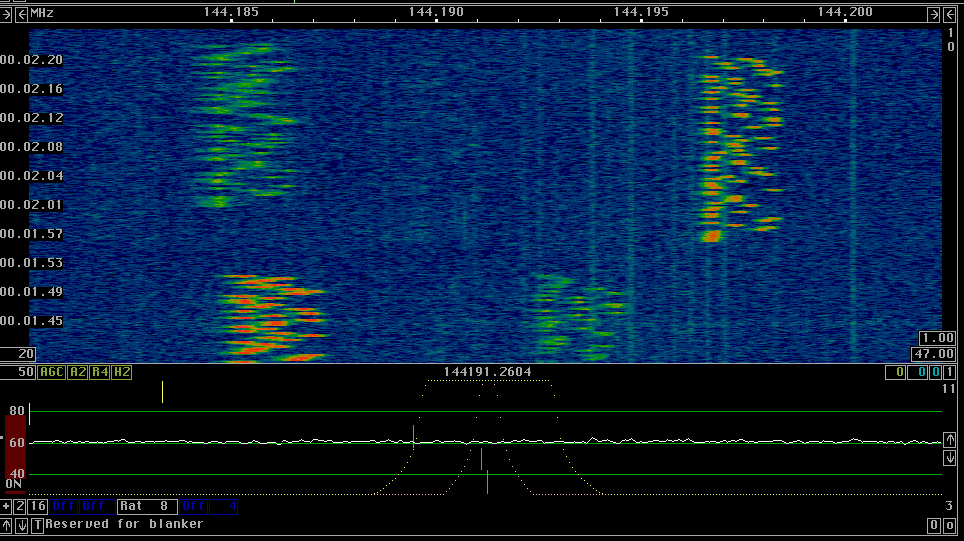
You see 4 Q65-30D aurora signals here. Also 2 weak signals in between.
Procedure to decode
This is not a live procedure! This is intended to get the timing correct from the random recording.
I made recordings between 3:00 PM and 3:30 PM UTC using an RTL-SDR. Each recording covers the frequency range 144 - 146 MHz and is 4 minutes long. The antenna was a 9 element yagi at 4m above the ground. I then converted the recordings to IQ WAV format so that I could listen to them in Linrad.
Once I found a signal I recorded the audio and saved it as a normal audio wav file. I then created software with Sox and Python that converts this recording into a file with a 12k sample rate of 30 seconds. I can open this file in WSJT-X or MSHV for decoding. Sox is used to convert the recording to mono, convert the sample rate to 12k and cut out exactly 30 seconds. In Python I created a waterfall with which the time can be determined and parameters can be set correctly to cut 30 seconds from the recording.
Decodes
DD0VF
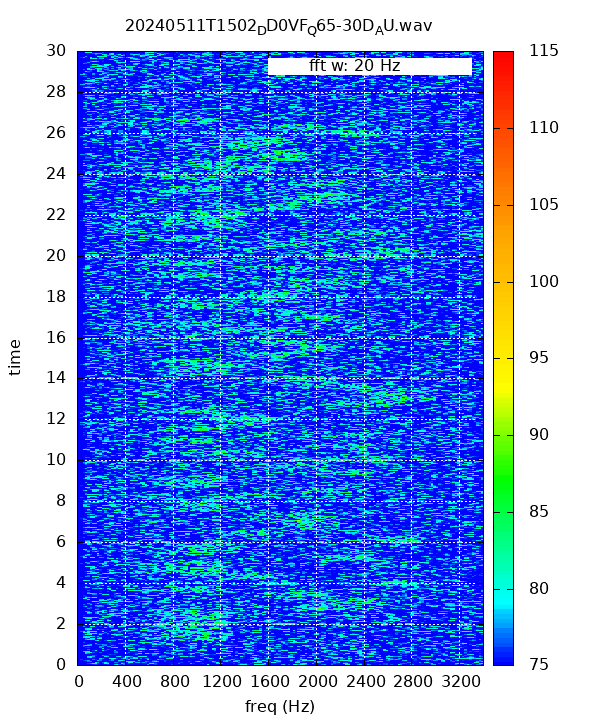
listen recording
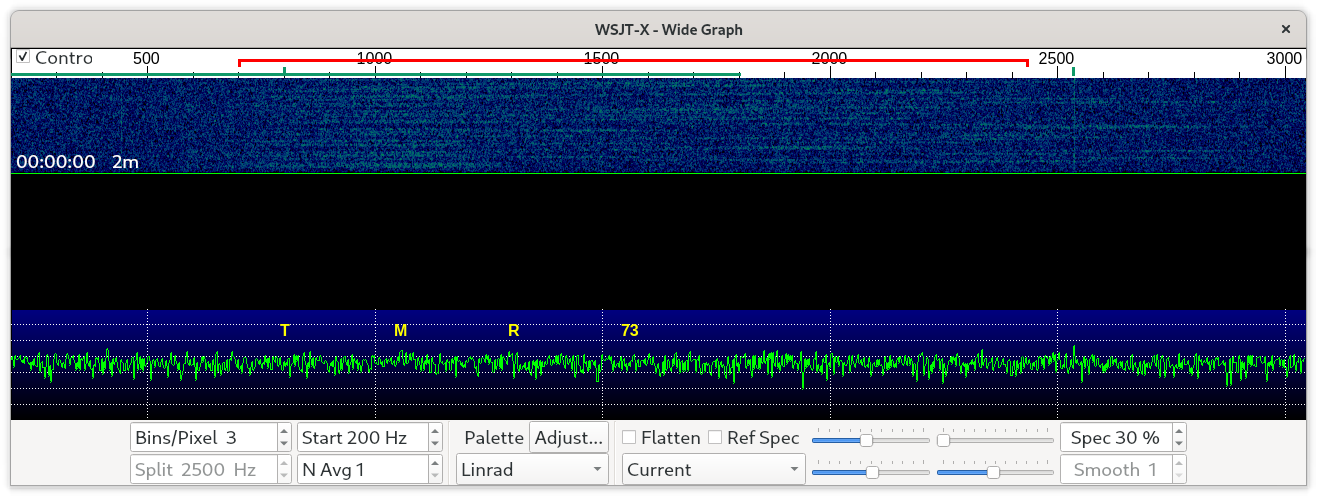
Decode: 000000 -7 0.7 1043 : CQ AU DD0VF JO61 q0 EU
DL8SCQ
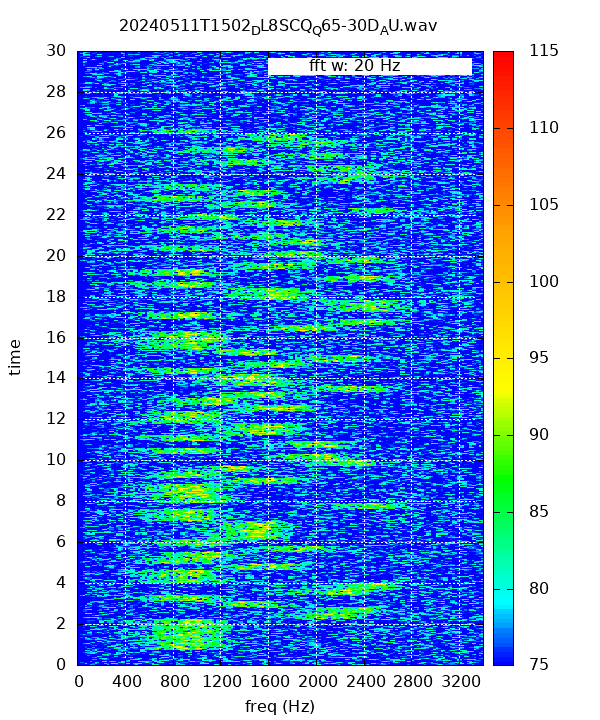
listen recording
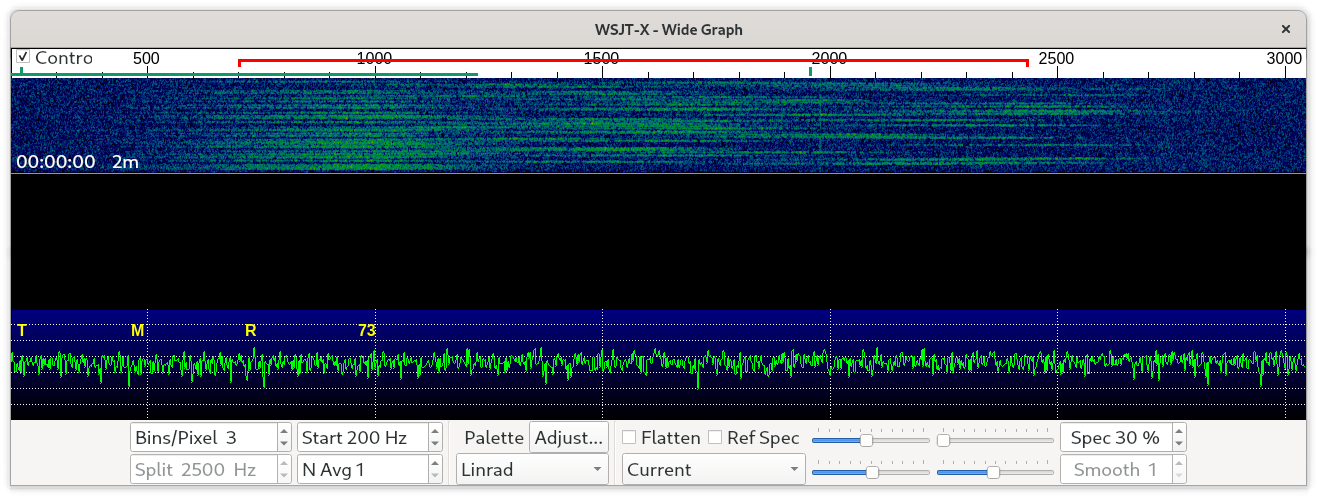
Decode: 000000 -1 0.3 979 : CQ AU DL8SCQ JN48 q0 E>
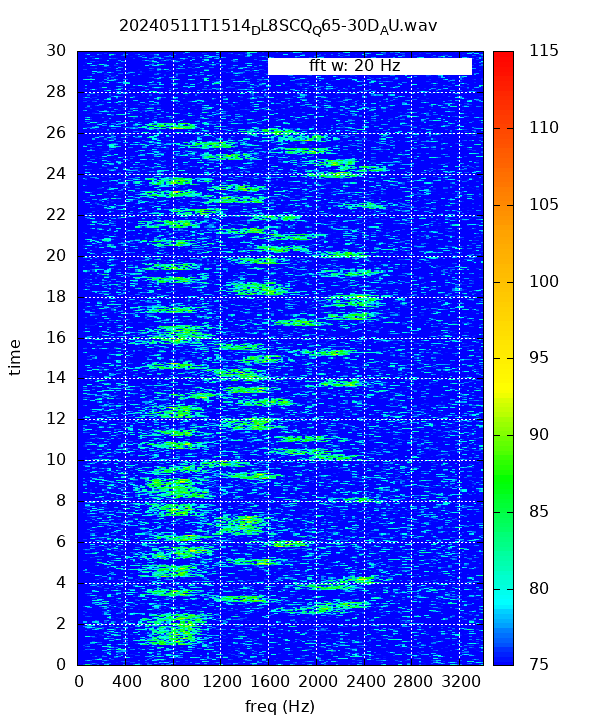
listen recording
G7KTP
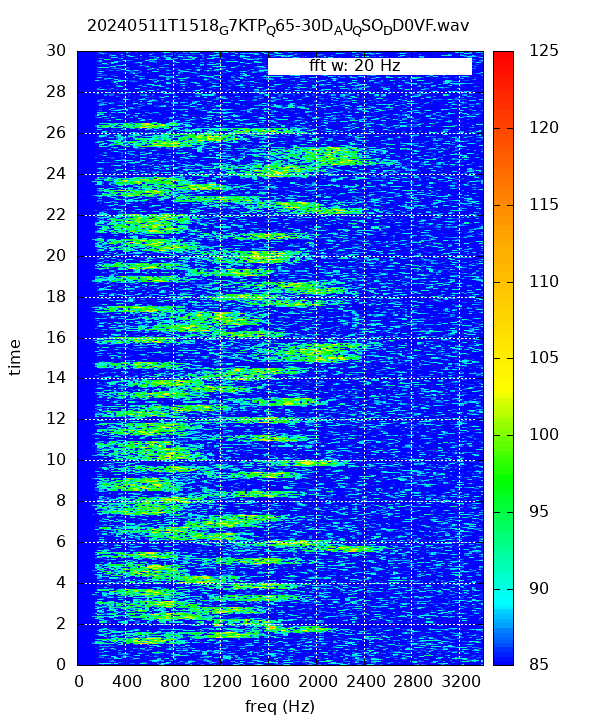
listen recording
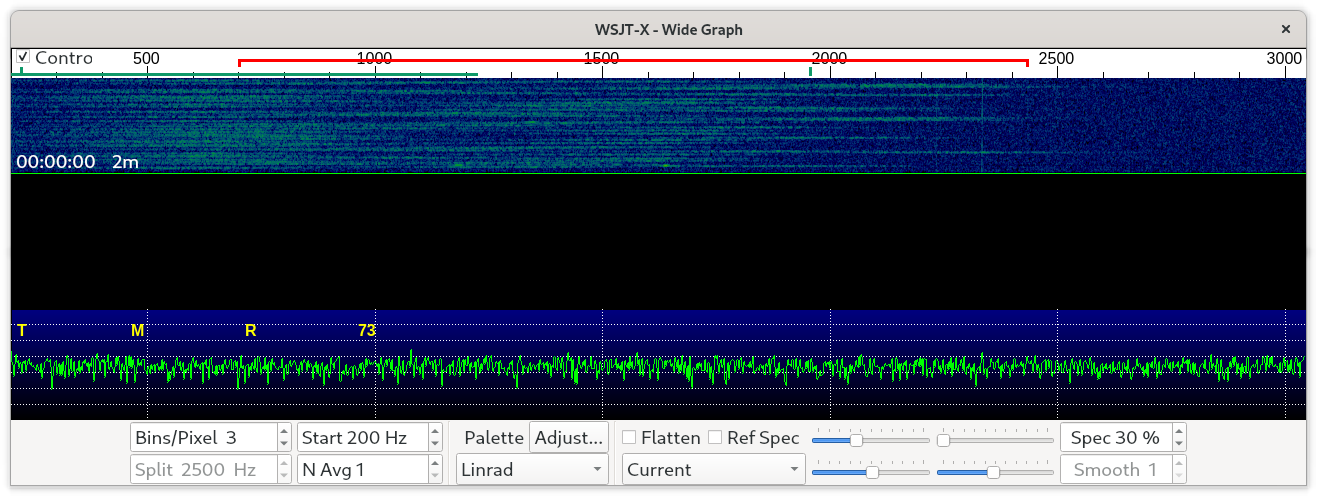
Decode: 000000 -2 0.6 599 : DD0VF G7KTP R+02 q0
G4LOH
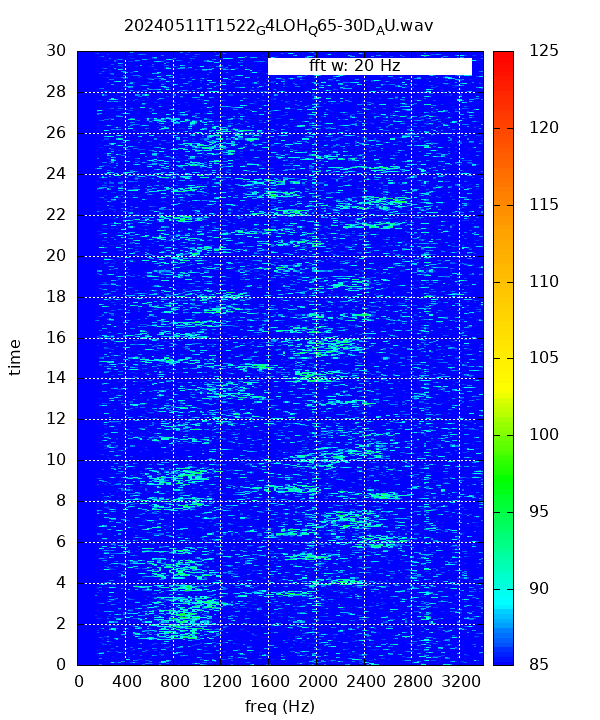
listen recording
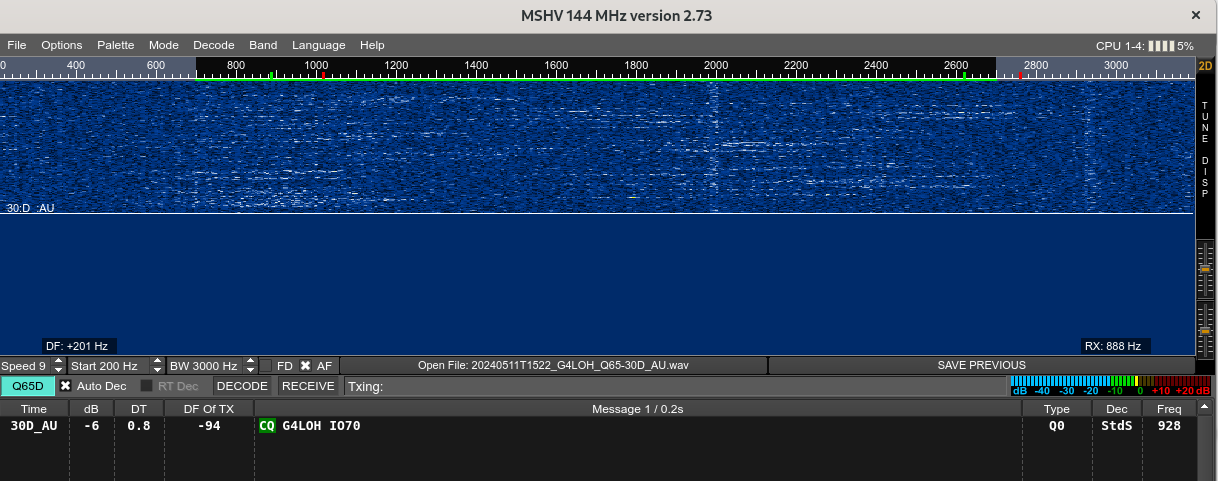
000000 -6 0.8 930 : CQ G4LOH IO70 q0 EU
Conclusion
Signals are barely visible on the WSJT waterfall screen but good visible on a SDR wideband waterfall.
Signals have a doppel spreading and a doppler shift.
Due to the Doppler shift, stations are not zero beat relative to each other. The use of the RIT or splitfreq mode is necessary to get the signal to be decoded into the SSB passband.
I have a better decode in WSJT-X than in MSHV.
HOME | Go Back









